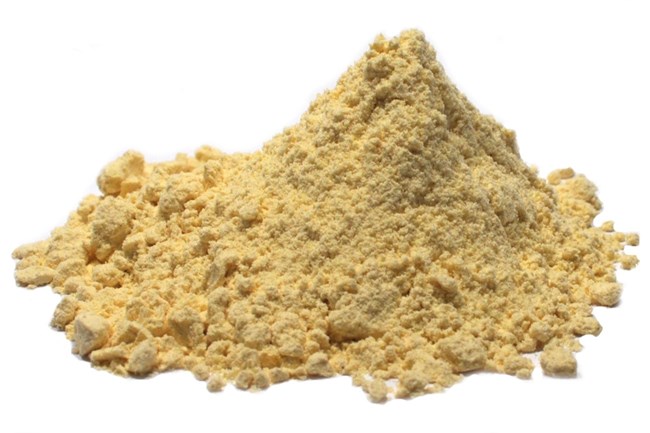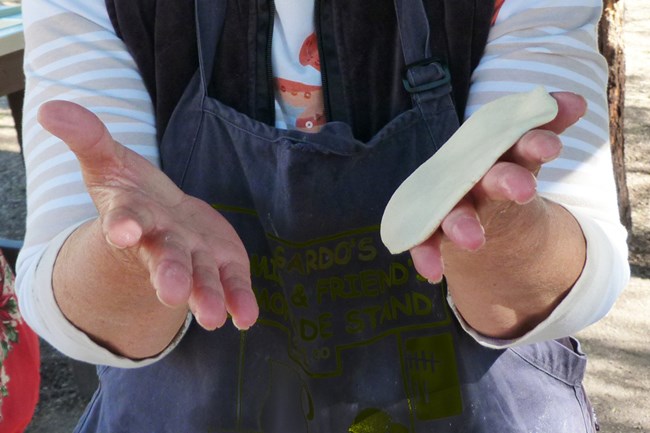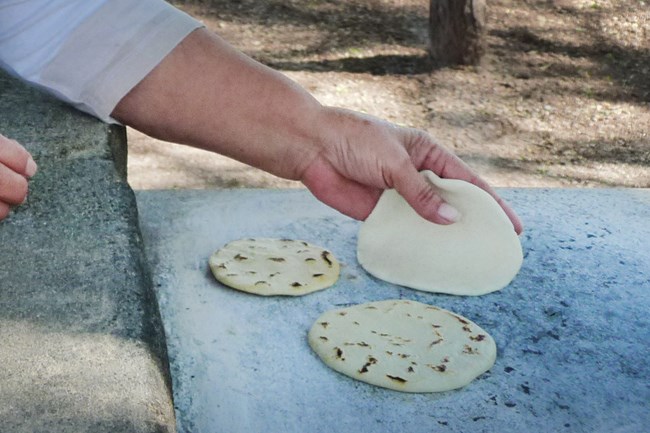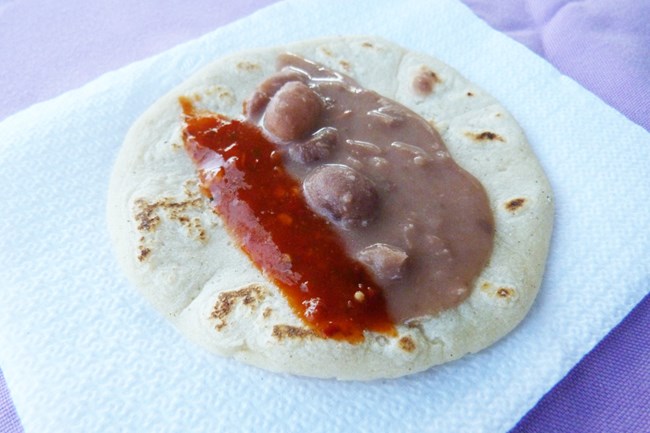Last updated: September 20, 2020
Article
Tortillas de maíz (Corn Tortillas)

Tortilla Making and History
What exactly are tortillas? How big are they? Of what are they made? How should they be made? These are questions that can spark much discussion and debate, even among tortilla makers themselves. The important thing is that none of this really matters - they are GOOD, as you will be able to assert for yourself when you eat one made fresh by a Tumacácori demonstrator or in your own kitchen.
Origins
According to a story told in Mexican-American households, Hernan Cortez, met with an emissary of the great Moctezuma and proceeded to extol the glory of his sovereign, Charles I. "My king is so wealthy that he eats each course of his meal off of a different golden service which only he may use," said Cortez. "My emperor, Moctezuma," replied the Aztec, "uses a different spoon for each bite." Moctezuma's spoons, las cucharitas de Moctezuma, were, of course, corn tortillas.
The Spanish called them “tortillas” because they resembled the flat, round omelets known as tortillas, commonly eaten in Spain.
Culinary and Social Tradition
Since earliest times, thin cakes of corn have been a staple of the Mexican diet. Made of kernels that have been lightly soaked in a lime mixture and then ground on a stone metate to form a dough or masa, fresh tortillas traditionally accompany each meal. In many households they are still patted out by hand, and for countless centuries the soft slap, slap of tortilla making has been a familiar domestic sound wherever Mexicans live. Nowadays, of course, there are tortilla factories all over Mexico and the United States, and many homes have tortilla presses. However, the handmade tortilla is still considered by many to taste better and be more wholesome.
The tortilla is a versatile food. Fresh and hot, it is used as an edible spoon and pusher. Slightly stale, it is dipped in a rich sauce to form a base for enchiladas. Fried, it becomes a taco shell, a platform for a tostada, or a chip with which one can scoop up beans or salsa. The raw masa can be mixed with cheese or chile and cooked to form other dishes. Among these are the locally favored flat enchiladas, which are not enchiladas at all, but fried cakes of a special masa served in a red chile sauce.

Ingredients
2 1/2 cups corn flour
2 cups warm water

Step 1: Mix
Using your hands, mix ingredients until a smooth dough forms. If the dough is crumbly, add a small amount of water. If the dough is wet and sticky, add a little more corn flour.

Step 2: Knead
Form the dough into a large ball. Leave the ball of dough in a bowl and cover with plastic. Let the dough sit for about an hour.

Step 3: Preheat and Form Balls
After the dough has sat for about an hour, place a flat cast iron skillet on the stove on medium heat. While the skillet preheats you can begin to separate small balls of dough. Divide all of the dough into approximately 24 small equal sized balls.

Step 4: Shape
Option A (the pressing method): Place a small ball of dough between a folded piece of plastic wrap. Use your palm to flatten the dough on a countertop. Remove the plastic from the top of the flattened tortilla, lift the plastic with the pressed tortilla, place the exposed side of the tortilla in your hand and carefuly peel away the plastic from other side of the tortilla. Be careful not to tear the dough.
Option B (the patting method): Flatten the ball into a small disc. Pat it back and forth between your hands.

Step 5: Cook
Place the tortilla on the preheated skillet and cook for 45 seconds. Turn over and continue to cook for about 1 minute. Browned spots on the tortilla may appear and the tortilla may puff up during the cooking process. Turn over again and cook for another 15 seconds. Total cooking time for each tortilla is about 2 minutes. Place the cooked corn tortillas in a clean towel to keep warm, until serving.

Step 6: Serve
These types of tortillas are called gorditas chicas, or "little fat ones." They aren't really suitable for enchiladas, but are delicious when split, lightly fried, and served with various meat fillings.
